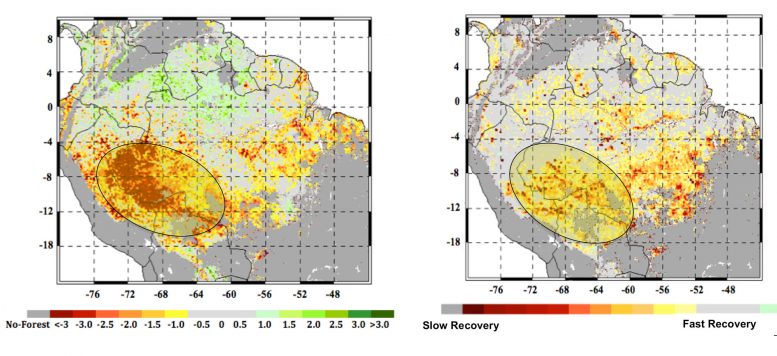While rainfall levels gradually recovered in subsequent years, the damage to the forest canopy persisted all the way to the next major drought, which began in 2010. About half the forest affected by the 2005 drought – an area the size of California – did not recover by the time QuikScat stopped gathering global data in November 2009 and before the start of a more extensive drought in 2010. “The biggest surprise for us was that the effects appeared to persist for years after the 2005 drought,” said study co-author Yadvinder Malhi of the University of Oxford, United Kingdom. “We had expected the forest canopy to bounce back after a year with a new flush of leaf growth, but the damage appeared to persist right up to the subsequent drought in 2010.” In contrast, QuikScat’s scatterometer radar was able to see through the clouds and penetrate into the top few meters of vegetation, providing daily measurements of the forest canopy structure and estimates of how much water the forest contains. Areas of drought-damaged forest produced a lower radar signal than the signals collected over healthy forest areas, indicating either that the forest canopy is drier or it is less “rough” due to damage to or the death of canopy trees. Results of the study were published recently in the Proceedings of the National Academy of Sciences. Other participating institutions included UCLA; University of Oxford, United Kingdom; University of Exeter, Devon, United Kingdom; National Institute for Space Research, Sao Jose dos Campos, Sao Paulo, Brazil; Boston University, Massachusetts; and NASA’s Ames Research Center, Moffett Field, California.
